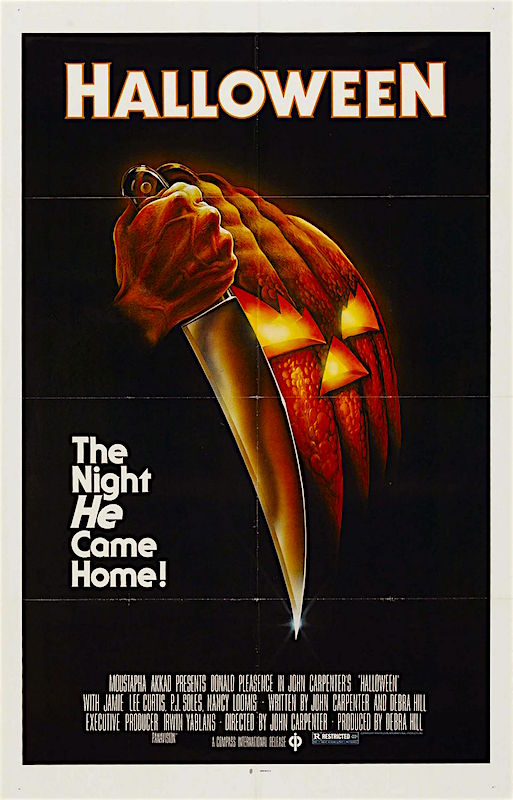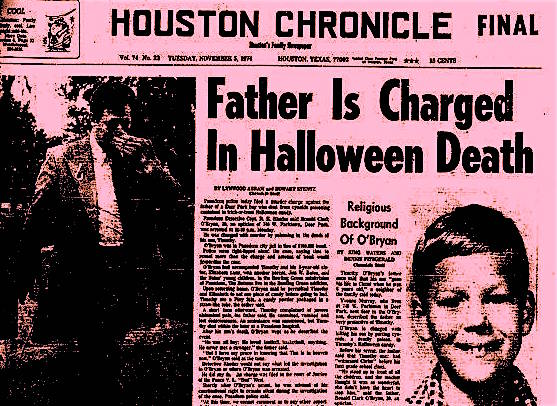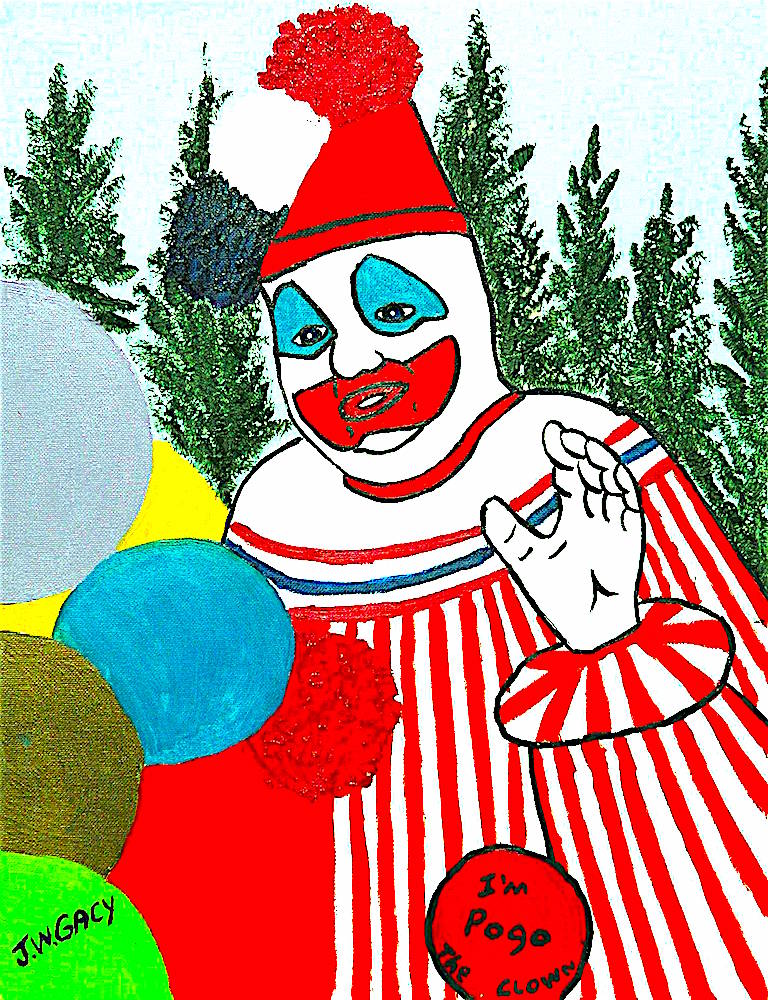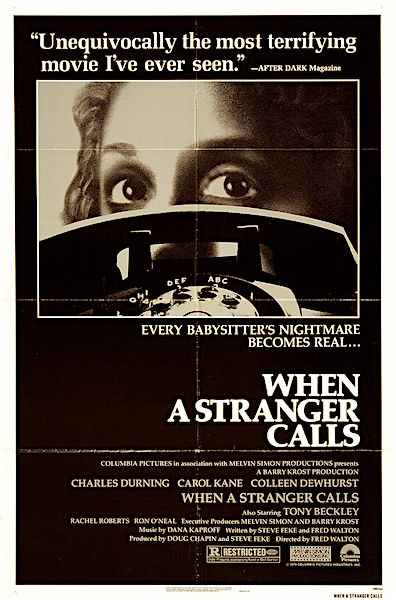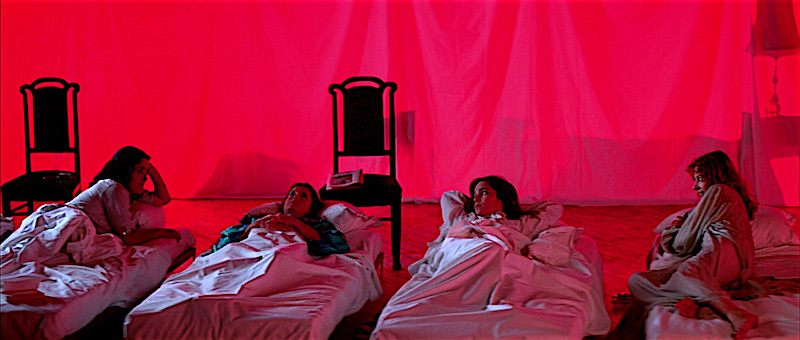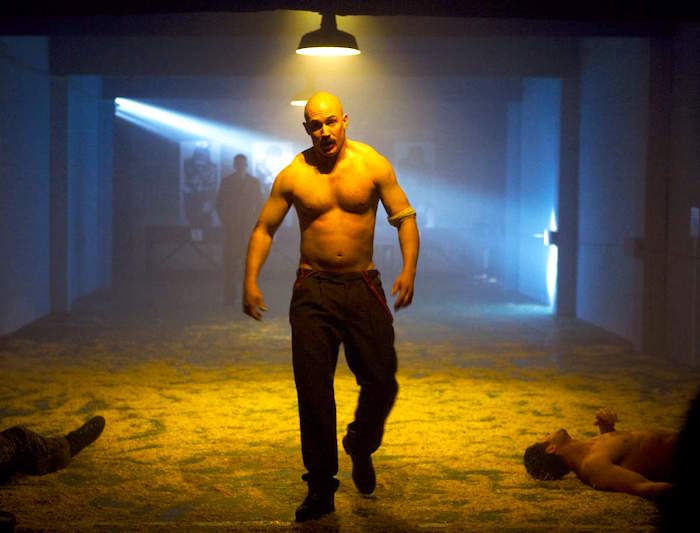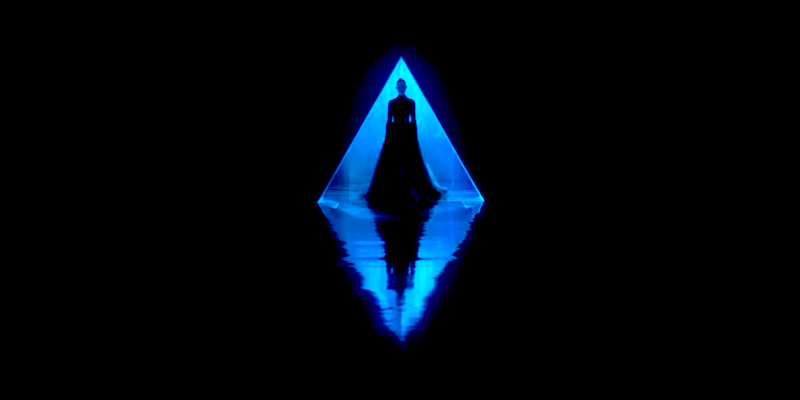As to be expected Freud and Jung took different psychological views regarding why humans enjoy scary entertainment. There will always be debates regarding psychoanalytic reasoning, but I think most would agree that we like horror movies for fairly obvious reasons: catharsis, adrenaline rush, emotional intensity, curiosity, and the sheer fun of forbidden excitement. The pleasure found in being scared is often contradictory to common sense. One thing is for sure — the popularity of horror films will never cease.
I was not yet a teenager when my father bought me a ticket to see John Carpenter’s iconic Halloween. I’m not sure if the movie scared me as much as what happened within the darkness of the cinema. It was a sold out theatre. I remember noting that I was the smallest person there. I opted to sit in a chair directly next to the wall. This was an old-school cinema that had been converted to include an additional screening room out of what had once been a balcony.

“It was the boogeyman…”
Laurie is almost certain she is being followed.
Jaime Lee Curtis
Halloween
John Carpenter, 1978
Cinematography | Dean Cundey
Halloween was playing in the main cinema. Even though a good portion of the movie theatre had been annexed into a separate space — the main room was still fairly big. Red curtains were draped over the entire space. That late afternoon the cinema seemed menacing to me. I slipped my hand toward the curtain. I pushed and pressed against the curtain covered wall.
“OK. Nothing hiding there,” I thought to myself.
This would turn out to be a big mistake. Most likely it was an older teenager who noticed me inspect the side wall to the right side of my seat.
John Carpenter’s movie started. It was fairly early into the film. The protagonist, Laurie, was looking out the window of her home. Was that a masked monster looking up at her?
Just as Michael Myers appeared between the flying bedsheets a man pushed through the red curtain and pushed me in the shoulder. “Boo!” he screamed. A cinema full of people jumped and laughed. I didn’t so much jump as imploded into myself. This little October scare literally horrified me. I remember being confused. I wasn’t sure if I wanted to scream, shout, cry or just run for my life. Instead I sunk deep into my seat. My small cup of soda had flown up into the air. The contents had landed all over me.
There was a grown-up sitting next to me. “This kid just spilled his Coke all over me!”
I could feel her eyes glaring at me. Upset, wet and cold I cringed in my over-sized chair and spent the remaining duration of the movie looking more to my right than on the screen. This was to be a cinematic experience I would never forget.
I hated Halloween. And I’m referring to the holiday. I disliked the holiday before my father had left me to see the same-named movie. It is impossible to over-stress the importance of childhood experiences. What we experience and live as children forms our identity almost more than genetics. I had already survived gruesome abuse by the time I was 8. Of course that has informed the way I manage through my life, but other things have as well. As a survivor I have spent a good deal of time thinking about Jung’s Archetypal psychoanalytic theories.
How much of what I enjoy in film or entertainment has been informed the abuse I survived? I think those experiences have had a profound impact on the stories that appeal to me. A film that focuses on dark human themes often seems to offer me relief and often abstract validation. It is as if I often find comfort in seeing situations that depict something more horrific than what I lived. I also suspect I enjoy discovering that I can find a “safe place” to experience extreme emotions that I have often fought to suppress. And these “safe places” found in cinemas have been able to confirm that I can experience horror without folding into myself. The stress of cinematic horror offers a decompression of my own internal fears and stressors.
But there are aspects of experience which take hold in a more sinister way. I do not really remember the following examples of human cruelty as much as I remember the resulting behaviors. This is a key component when I attempt to think out why I dislike Halloween and yet love horror movies.

From 1970 to 1973 Dean Corll AKA “Pied Piper” brutally tortured and murdered at least 28 children in southeast Texas…
I was aware that the horrible odor we had often encountered at the beach was caused by rotting human bodies. The devastating details of what I believe is often called The Pied Piper Killings were certainly not shared with me, but all of us who were kids at this time knew more about it than we should have. I knew that the victims had been kids. I knew that had died horrible deaths. This incident would serve as fodder to scare many of us into not speaking to strangers or enter stranger’s homes.
Looking back on this it seems almost mean that our parents and teachers used these real-life events to scare us away from the idea of talking with or taking candy from strangers. It seems to me that most children already know to be wary of strangers. I don’t think a child needs to be told a gruesome reality to prevent tragedy. However this real horror was used as a tool to reinforce that danger was ever lurking to kills us.
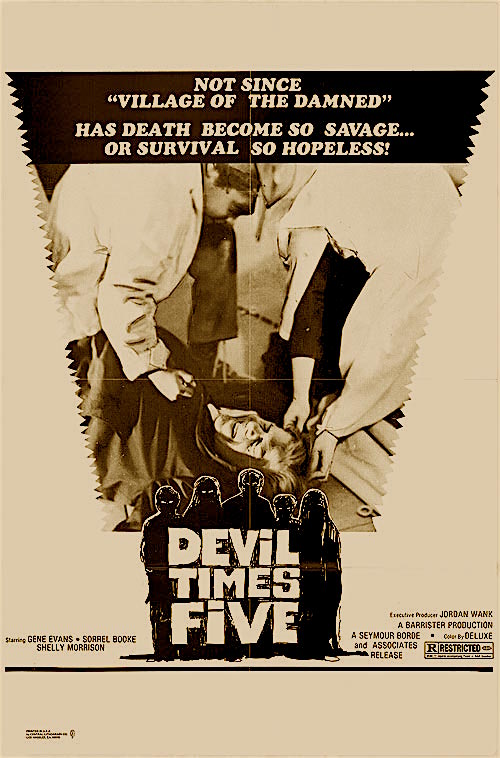
“What Wendy just saw them do will make you sick to your stomach if it doesn’t make you faint first!”
Devil Times Five
Sean MacGregor, 1974
But the real-life incident that forever warped my view of Halloween would take place a bit later and I knew exactly what had happened. It probably didn’t help that these Pied Piper Killings took place in the same area of Texas in which I lived, but it most certainly added to the impact of what happened when I was 7 years old. A Houston father decided to murder his children on October 31, 1974.
I was always told he was respected within his community so it was even more shocking that he would mix poison with the sugar powder contained within Pixy Sticks. I don’t think my friends or I fully understood how a father would get money for killing his son — but that is how I interpreted it at the time. He wanted to kill his children to make money. Obviously the goal was to collect on insurance. In order to protect himself from getting caught he tried to have other children to eat the poison Pixy Stick candy. Luckily, his other child and the other children to whom he gave the candy failed to eat it.
It is easy to understand why this horror would strike fear in parents. I had not been trick’d or treating much by the time this act of unspeakable filicide took place. At the time, the idea of dressing up and roaming about for candy seemed incredibly fun. But all of that changed shortly after the Halloween of 1974. As it turns out I loved Pixy Stick candy. I was no longer allowed to have it, though I never wanted it again anyway. It was also after this incident that new attention was given to the treats I secured. I was not allowed to keep or eat them. My Halloween loot was tossed and replaced with a candy bar my mother had bought. A candy bar is not the same as a bag of candy.
But the far deeper fear that lurked within my mind was actually not all that strange. After everyone from my Grandmother to my teachers had told me about the Houston father who had poisoned candy to kill his little boy — I became terrified that my own father was planning to kill me for money. Suddenly the idea of Trick-Or-Treating was not only not fun — it became a profoundly deep source of fear. I began to dread Halloween.
I am fairly certain it was around this time that me and my friends began to hear stories about razor blades being hidden in apples. I can remember coming up with the idea that of saying that biting into apples hurt my teeth. It would be years before I was comfortable with biting an apple. I still don’t like doing so. It was also around this time that I realized my fear of clowns was grounded. Somehow the lore of serial killer, John Wayne Gacy, had morphed into the identities of both the evil Houston father and the insane Pasadena Texas Pied Piper.
In my head — and the in the head of many of my friends — all three were Killer Clowns. Soon an image of the way Gacy painted clowns would emerge into our cultural consciousness. I’m Pogo The Clown would spark psychological insights and inward horrors. I was (and still am) terrified of clowns. Of course, I think many people are afraid of clowns. Coulrophobia is the official term for fear of clowns. But I really think much of my fear comes from the idea that a clown is somehow connected to these horrors.
Harmless ghost stories, tricks to scare and horror movies took on a strange power. I might have known that these things were fictional but there was always a lingering suspicion that maybe I was wrong. But the paradox of fear was and remains very much apart of my life. As a child I was terrified and simultaneously addicted to scary movies and stories. I was repulsively fascinated.
The cover of this book which resided in our home intrigued me. I would sneak it off the table and/or shelf to see if I could read it. I never had much luck, but the image on the cover seemed both endlessly cool and scary. But the movie was a mysterious source of curiosity. I saw the movie long before I should have. I didn’t really understand what was going down, but it freaked me out.
At some point I became aware that both were linked to reality. These were based on true stories. Suddenly the concept of a Devil became a source of anxiety. The trains that endlessly ran behind our home often made the house shake. I began to worry that the shaking was caused by a devil instead of a train.
The Exorcist film was particularly creepy. It didn’t seem like any horror movie I had ever seen. It looked like some grown-up movie that would bore me, but then something deeply disturbing would happen — and the characters on the screen and the people in the audience were reacting as if all was real.
Later I would finally read that book. I would worry that I could hear sounds in the attic. …truly odd as we didn’t have an attic.
But to be clear, The Exorcist was endlessly interesting to me. I was afraid, but felt compelled to explore any information I could gain.
One night a late movie was on that told the story of two girls making prank phone calls. Things take a very sinister turn when they make the error of dialing the number of a man who has just committed murder. It was all quite silly and over-the-top. I knew that as I watched it. It would be later that the conceit of the film would haunt me. A pretty lame movie quickly took on horrifying aspects within my mind.
I was a 13 year old at the time When a Stranger Calls came out. Of course I saw it in the cinema. I remember the adrenaline rush when the babysitter is told that the scary calls she has been getting are coming from within the home she is sitting.
It was most definitely a potent moment. Sadly Fred Walton’s film slipped into a strangely dull second half. As I left the cinema and stepped into the sunshine outside I remember thinking that the whole movie was stupid. Later that night and for years to come that filmed situation in which a babysitter realizes that the creepy “prank” caller is actually upstairs with two dead children would become a deeply disturbing idea. Of course, I was not alone.
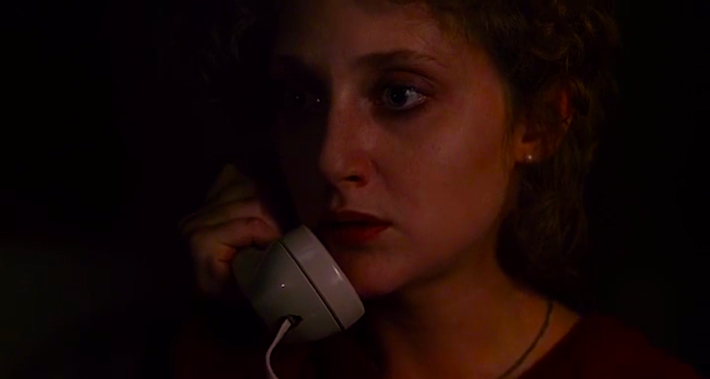
“Listen to me. We’ve traced the call. It’s coming from inside the house. Now a squad car’s coming over there right now, just get out of that house.”
Carol Kane
When a Stranger Calls
Fred Walton, 1979
Cinematography | Don Peterman
I was an adult by the time I finally saw Dario Argento’s pretty neon bloodbath, Suspiria. The special effects were fake. The actors’ voices often didn’t match their lips. Worst of all, the plot didn’t make much sense. All of that being said, the oddly masterful movie has never left my psyche. Some of the images and sounds that make me laugh when I watch it — often haunt my nightmares.
The first time I saw The Texas Chainsaw Massacre was at a midnight movie. I was with some of my closest teenage friends. None of us were yet 17, but we had managed to get tickets. As Tobe Hooper’s horrifying movie unspooled we all pretended to make fun of what we were seeing. It was as if we were daring each other to not be afraid. But by the time the movie reached it’s final act none of us were joking around anymore. All of our eyes were clued to the screen in horror.
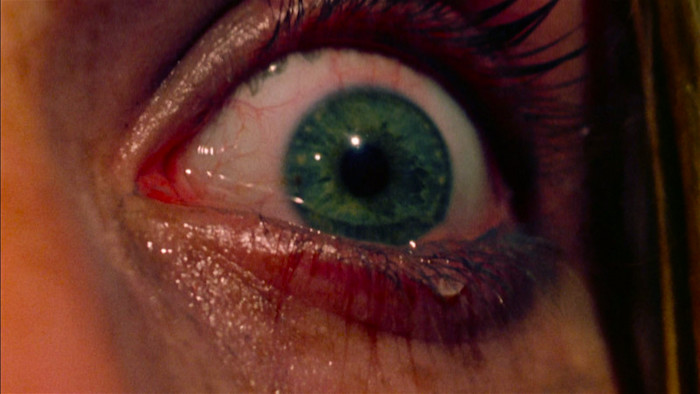
“The film which you are about to see is an account of the tragedy which befell a group of five youths, in particular Sally Hardesty and her invalid brother, Franklin. It is all the more tragic in that they were young. But, had they lived very, very long lives, they could not have expected nor would they have wished to see as much of the mad and macabre as they were to see that day. For them an idyllic summer afternoon drive became a nightmare. The events of that day were to lead to the discovery of one of the most bizarre crimes in the annals of American history, The Texas Chain Saw Massacre.”
Tobe Hooper, 1974
Cinematography | Daniel Pearl
The fact that we were all living and have grown up in southeast Texas where we were surrounded by suspicious looking BBQ shacks only added to the fear the film invoked. It was also alarming how much the whole movie felt like it was taking place within the surrounding counties of our homes. I do not think any of us knew the movie had actually been shot near Austin. We just knew the title by infamy. Gaining the understanding that it was very loosely based on true stories only added to the movie’s horror.
As I was entering my last year of high school I saw an old movie on videotape. It was called Let’s Scare Jessica to Death. A film so quiet we had to blast the volume to understand what the film’s protagonist was saying. The special effects were low-fi and not all that much happened in it that was scary. But this film has haunted me ever since. It still fascinates and horrifies me. The idea of a fragile person dealing with mental illness finding herself in situations which she not distinguish as reality or nightmare holds a repulsive fascination.

“Dreams or nightmares? Madness or sanity? I don’t know which is which.”
Let’s Scare Jessica to Death,
John D. Hancock, 1971
Cinematography | Robert M. Baldwin
I was a grown-up and functioning adult when I saw David Lynch’s experimental video nightmare, Inland Empire. An epic proportioned examination of identity becomes unhinged and often horrifying. Laura Dern plays her role(s) with realistic conviction. David Lynch paints the movie more than he films it. Inland Empire operates within various genres and plot themes so much that the viewer will either become enthralled or totally confused. Either way it is impossible to imagine that anyone could experience Inland Empire without falling into the sense of horrific doom.

An actor loses herself somewhere between reality, imagination and a director’s vision…
Laura Dern
Inland Empire
David Lynch, 2006
I always fought against my personal fears to participate in Halloween “fun.” However, by the time I was 30 I had decided that I would no longer take part. I lock the door and close the lights. I turn down all Halloween gatherings. I just find the idea of adults hiding their identities and roaming about drunk, stoned or just high on life creeps me out. On top of that, nearly all of it is used in ways to tap into our mutually shared fears. In the last two years many of our cultural and societal fears/paranoias have been manipulated into our realities.
As if our current shit show of an election were not amping up hostilities, rage and bullying enough — we have something new to worry about! People dressing up as Scary Clowns with intent to either cause harm or make us believe they are planning to do so. The idea of clown costumes and these new Scary Clowns mixing in the merriment of a San Francisco Halloween fills me with dread.
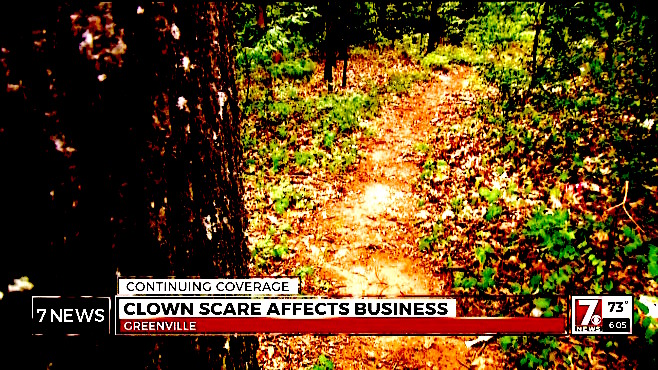
A time of surging terrorism, human cruelties, a nasty political election adds a new layer of threat: scary clowns roam about…
Of course I’ve allowed my paranoia to get the best of me, but Halloween remains a holiday I prefer to avoid. Paranoid or not, I do not enjoy it.
So why, then, do I love horror films? And make no mistake, I do love a well made horror flick!
While I might hide from Halloween the holiday, I will always take up the opportunity to see John Carpenter’s Halloween on a big screen. But please — do not hide and attack me as Michael Myers appears on the screen. I’m no longer a little kid and I’m likely to attack back!
Most of the things that can go bump in the night are imagined, but they are all somehow based upon truths that none of us want to believe. Some might actually really be bumping about. This is the spark that offers fun for most, but more than a little dread in some.
Matty Stanfield, 10.31.2016

” Demi, why you leave me, Demi?”
The Devil taps into the darkest corners of psyches.
The Exorcist
William Friedkin, 1973
Cinematography | Owen Roizman

